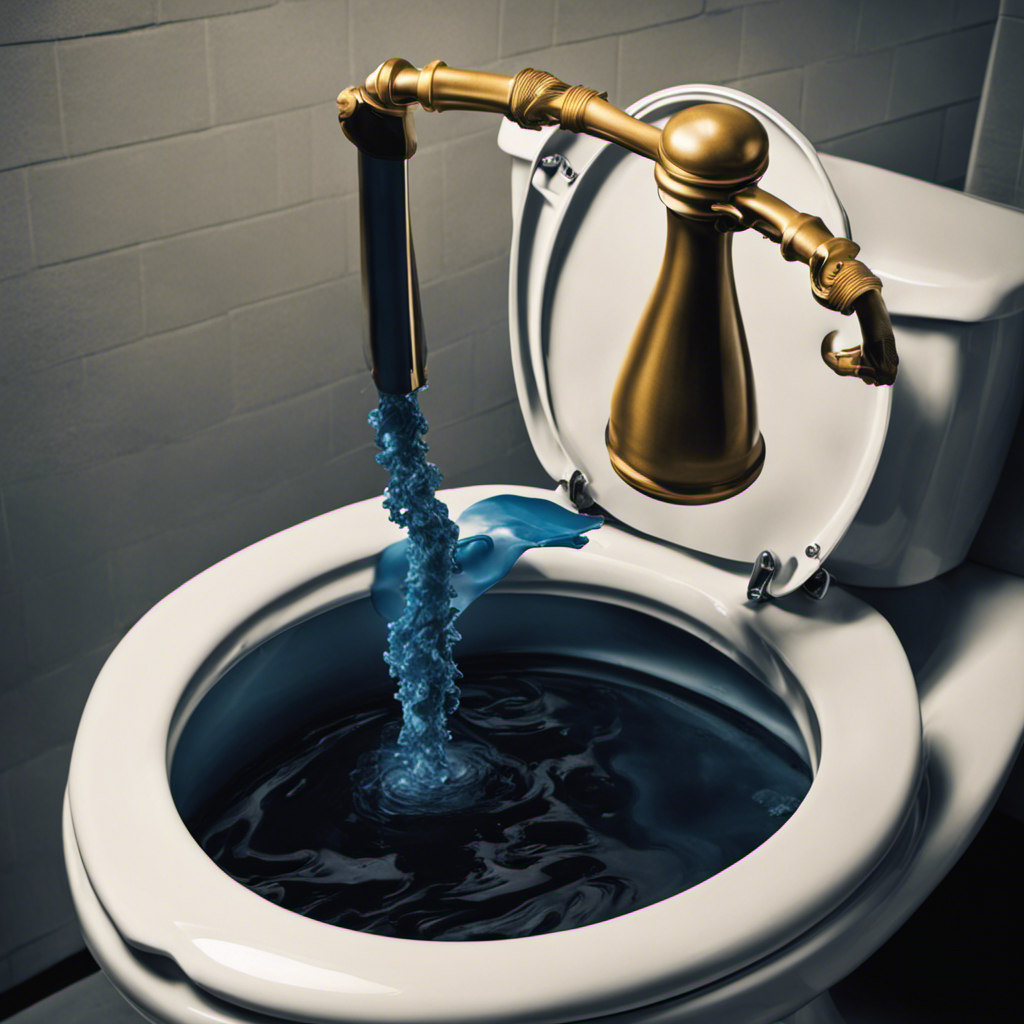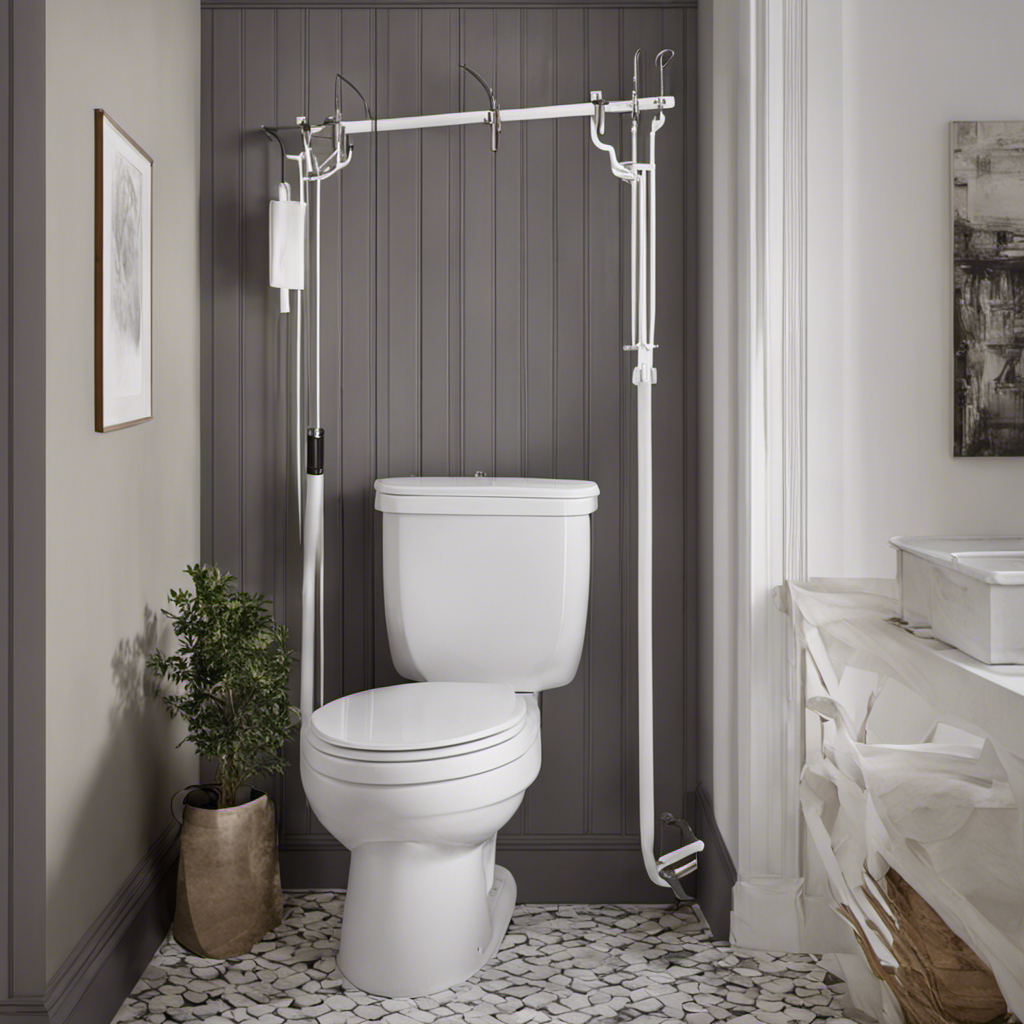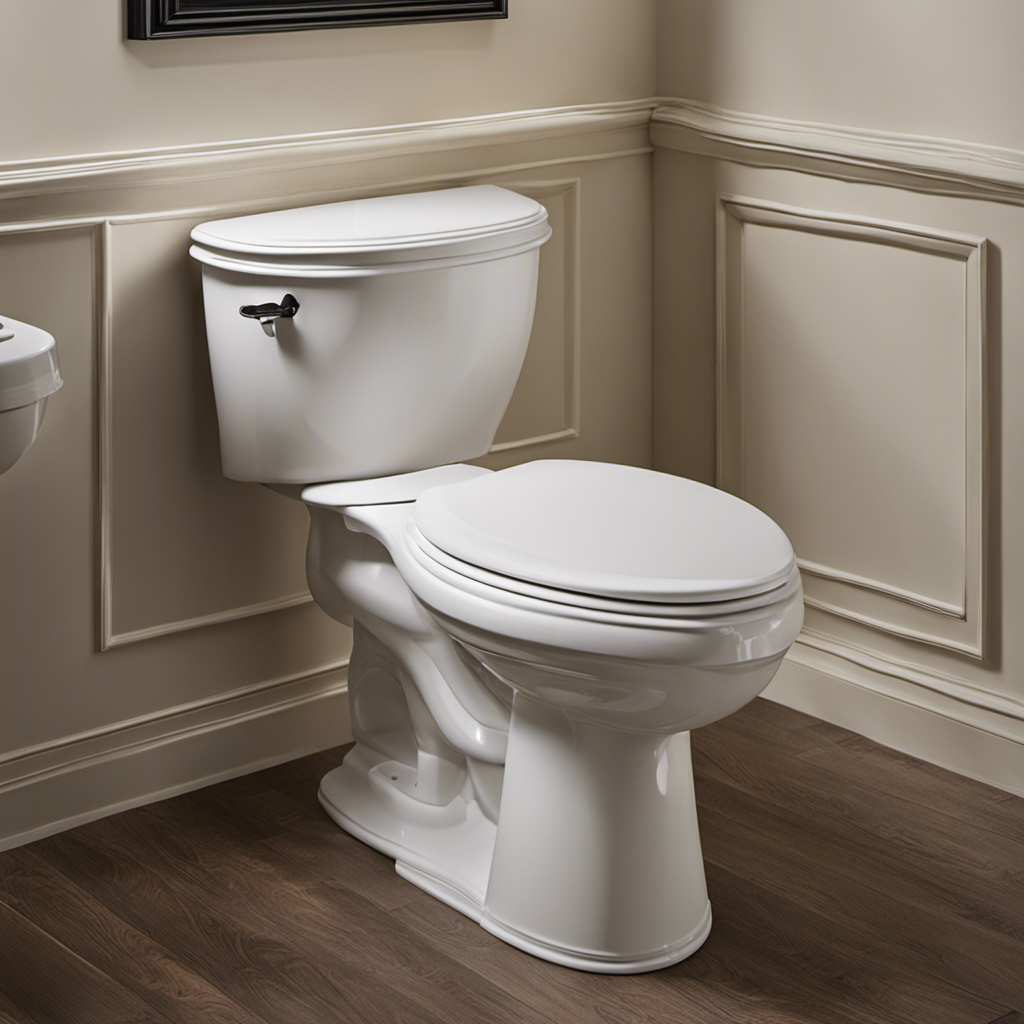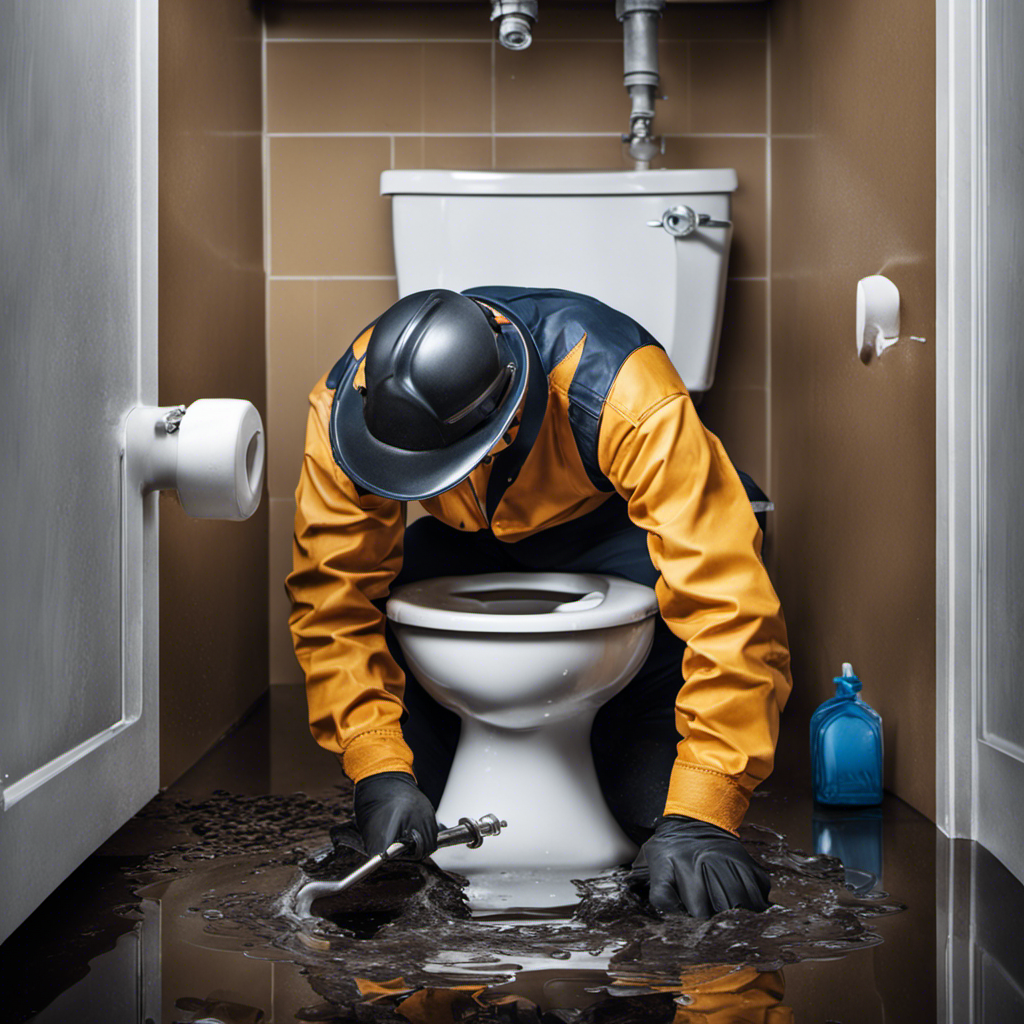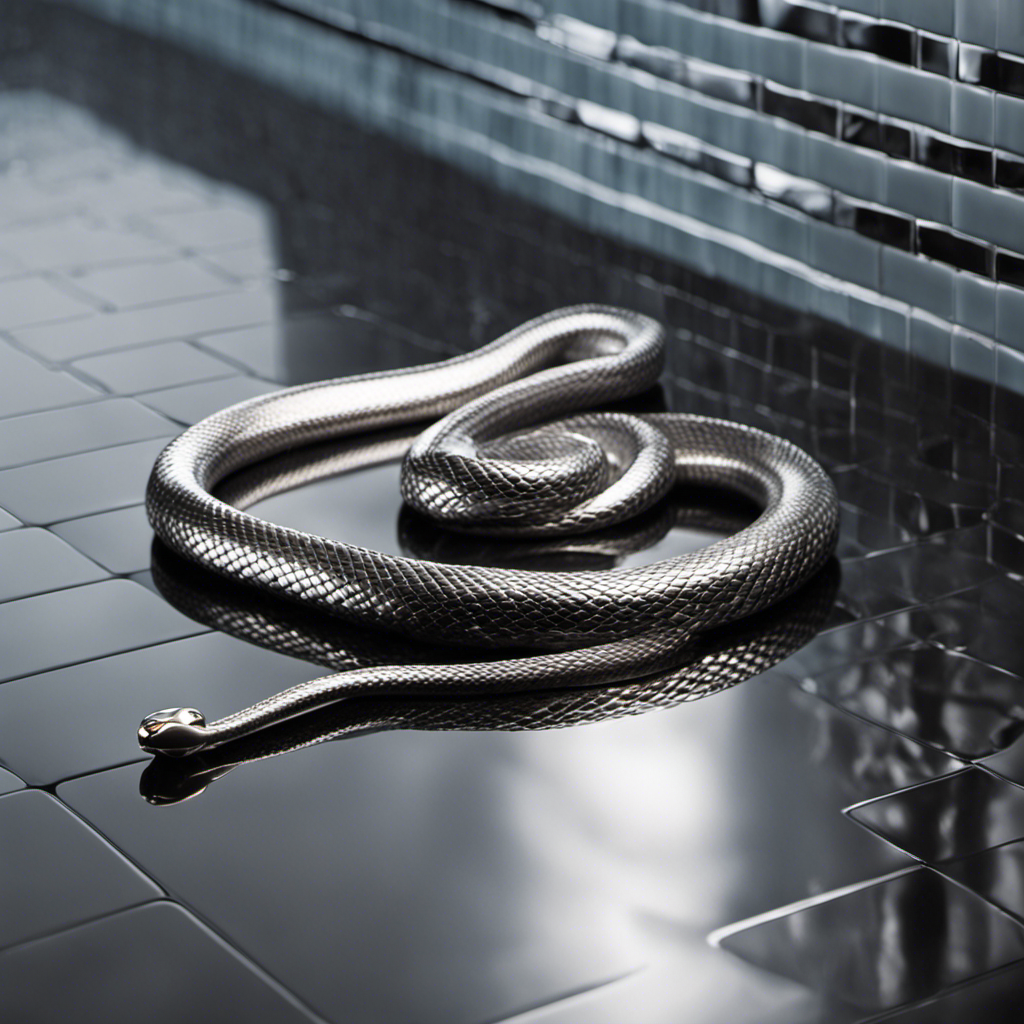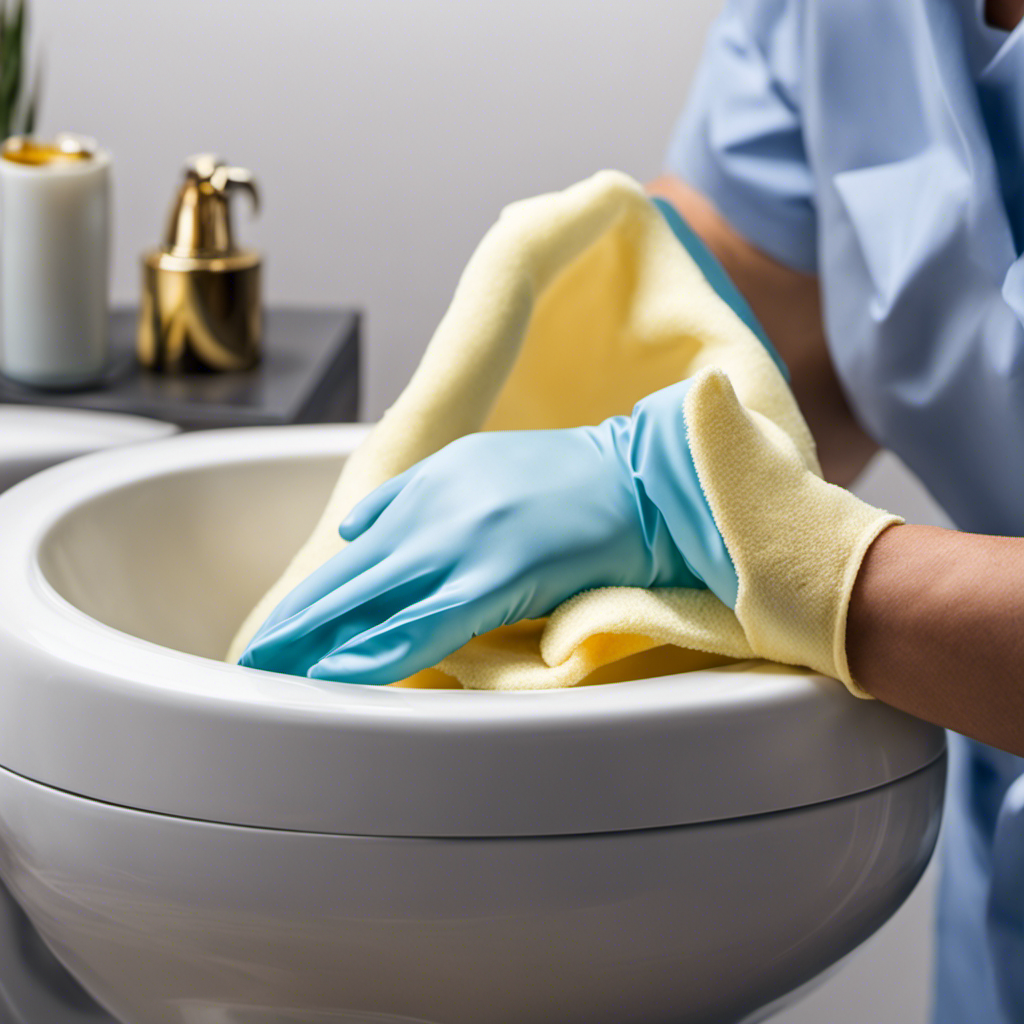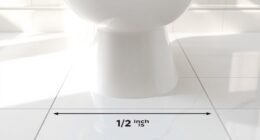I’ve learned from personal experience that dealing with a clogged toilet can be a frustrating and messy ordeal. But fear not! In this article, I’ll share my tried and true methods for unstopping a toilet.
From simple manual techniques to the use of chemical solutions, I’ll provide you with the knowledge and tools to tackle this common household problem.
By following these preventive measures, you can also avoid future toilet blockages.
So, let’s dive in and get that toilet flowing smoothly again!
Key Takeaways
- Gather necessary tools: plunger, toilet auger, rubber gloves
- Use plunger technique or drain snake method to unclog the toilet
- Use chemical cleaners with caution for stubborn clogs
- Regularly maintain and clean your toilet to prevent blockages
Preparing for Unstopping
First, you’ll want to gather the necessary tools for unclogging the toilet. Toilet blockages can occur due to various reasons, such as excessive toilet paper usage, flushing foreign objects, or a build-up of waste and debris. To identify signs that indicate a toilet is about to get clogged, you might notice slow drainage or water rising higher than usual after flushing.
To prepare for unstopping, you will need a plunger, a toilet auger, and rubber gloves. The plunger creates pressure to dislodge the blockage, while a toilet auger can reach deeper clogs. Rubber gloves are essential to protect your hands from bacteria and germs.
Once you have these tools, you can proceed to the subsequent section about basic tools for unstopping and fixing a clogged toilet.
Basic Tools for Unstopping
To effectively clear a clog, you’ll need a plunger and a pair of rubber gloves.
The plunger technique is a common and effective way to unclog a toilet. Start by creating a seal around the drain hole with the plunger. Push down firmly and then pull up quickly. Repeat this motion several times until the water starts to drain.
If the plunger doesn’t work, you can try the drain snake method. A drain snake is a long, flexible tool that can reach deep into the pipes and break up the clog. Insert the snake into the drain until you feel resistance, then twist and push until the clog is dislodged.
Remember to always wear rubber gloves when dealing with a clogged toilet to protect yourself from any potential mess.
Manual Methods for Unstopping
If you’re facing a stubborn clog, one option you can consider is using a plunger. Here’s how you can use the plunger method to unstop your toilet:
-
Get a plunger: Make sure you have a good quality plunger with a rubber cup that can create a tight seal around the drain.
-
Position the plunger: Place the plunger over the toilet drain and press down firmly to create a seal. Make sure the cup is completely covering the drain hole.
-
Plunge: With a strong, rapid up-and-down motion, plunge the toilet several times. This action creates pressure and suction, which can dislodge the clog and move it through the pipes.
If the plunger method doesn’t work, you can also try using a snake tool. This tool is designed to reach deeper into the pipes and break up stubborn clogs. Remember to always follow the manufacturer’s instructions when using a snake tool.
Chemical Methods for Unstopping
Another option to consider for stubborn clogs is using chemical cleaners. While I generally prefer using natural alternatives, there are emergency situations where chemical methods can be effective. Chemical cleaners contain powerful ingredients that break down the clog and dissolve it, allowing water to flow freely again. However, it is important to use these cleaners with caution as they can be harmful to the environment and to your plumbing system if used excessively. Here is a table comparing some common chemical cleaners used for unclogging toilets:
| Chemical Cleaner | Active Ingredients | Pros | Cons |
|---|---|---|---|
| Liquid Drain | Sodium hydroxide | Quick results | Harsh on pipes |
| Cleaners | |||
| Toilet Bowl | Hydrochloric acid | Effective on tough | Toxic fumes |
| Cleaners | stains | ||
| Enzyme-Based | Natural enzymes | Environmentally | Slower results |
| Cleaners | friendly, safe for | ||
| pipes | |||
| Foaming Drain | Sodium hydroxide, | Expands to fully | Can be messy |
| Cleaners | aluminum granules | coat pipes, | |
| effective on stubborn | |||
| clogs |
Preventive Measures for Unstopping
One way to prevent clogs is by regularly maintaining your plumbing system. It’s important to take proper care of your toilet to avoid blockages and keep everything running smoothly.
Here are three key steps to follow for proper toilet maintenance:
-
Be mindful of what you flush: Only flush toilet paper and human waste down the toilet. Avoid flushing items like feminine hygiene products, diapers, and paper towels, as they can easily cause blockages.
-
Use a toilet auger or plunger: If you notice a partial clog or slow draining, use a toilet auger or plunger to clear the blockage. These tools are effective in dislodging debris and restoring proper flow.
-
Regularly clean your toilet: Regular cleaning helps prevent build-up and keeps your toilet functioning properly. Use a toilet brush and cleaner to remove any residue or stains.
Frequently Asked Questions
Can I Use a Plunger to Unclog a Toilet?
Yes, you can use a plunger to unclog a toilet. It’s a common and effective method. However, if that doesn’t work, there are alternative methods like using a toilet auger or a mixture of baking soda and vinegar.
How Long Does It Typically Take to Unclog a Toilet Using Manual Methods?
Usually, unclogging a toilet using manual methods doesn’t take too long. It depends on the severity of the clog. If the plunger doesn’t work, there are alternative unclogging methods to try.
Are There Any Specific Chemicals That Should Not Be Used to Unclog a Toilet?
There are definitely toxic chemicals that should never be used to unclog a toilet. It’s important to prioritize safety and choose safe alternatives instead.
Can I Prevent Future Clogs by Using a Certain Type of Toilet Paper?
To prevent future clogs, I recommend using toilet paper alternatives such as eco-friendly options. These alternatives are designed to break down easily and are less likely to cause blockages in your toilet plumbing.
Is It Necessary to Remove the Toilet From the Floor to Unclog It?
Removing the toilet from the floor is not necessary to unclog it. Instead, try using a toilet auger, a handy tool designed to clear stubborn clogs. Avoid common mistakes like using excessive force or using chemical drain cleaners.
Conclusion
In conclusion, unclogging a toilet is like navigating through life’s obstacles. With the right tools and techniques, we can overcome any blockage that comes our way.
Just as we use plungers and augers to clear the path, we can employ manual and chemical methods to tackle challenges head-on.
However, prevention is key. By practicing good habits and taking preventive measures, we can avoid future blockages and keep the flow of life running smoothly.
Remember, just as a clear toilet brings relief, a clear path brings fulfillment.
